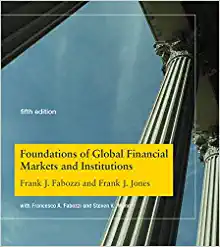


it's a macroeonomi question please
Haystack Bookstore is considering selling a new line of children's books by a very famous author. They expect selling the books will increase annual revenues by $2,000,000 per year and grow at 1% for the next 5 years (i.e. year 1 revenues are expected to be $2M, growing at 1% until year 6, which is the last year they would sell the books). Cash operating costs (not including depreciation or allocated overhead) for the new line of books are expected to be $600,000 in the rst year and grow at a rate of 2% for the next 5 years (i.e. until year 6). After year 6, the new books will be discontinued. The new line of books will (per the contract with the author) require extremely elaborate shelving that will last for all six years and cost $5,000,000, due upon signing the contract. The shelving will be depreciated for tax purposes on a straight-line basis to a remaining book value of $0 over 6 years. Management anticipates that it will be able to sell this shelving for scrap metal for $300,000 at the end of 6 years. Assume any gain or loss on the sale of the shelving is taxable (or tax-deductible) at the rm's tax rate of 35%. To help cover costs of the existing business, Haystack will allocate $1,000,000 per year in overhead to the new line of books when evaluating the line's protability. By beginning to sell the books, the bookstore will decide to remain open for longer hours, which will increase total overhead by $100,000 per year for each of the 6 years (they would not extend open hours if they did not sell these books). The cost of capital (appropriate discount rate) for the project is 11.4%. Should Haystack Bookstore decide to sell the new books? Why or why not? Support your answer. (60 points) (i) Define in words the following single figure indices: the crude death rate . . the directly standardised mortality rate the standardised mortality ratio. [4] (ii) Two states, A and B, of a particular country have produced the following mortality data for a given time period: State A Age last birthday Deaths Central exposed to risk 0 - 19 75 40,000 20 -59 1,175 80,000 60 - 100 2,600 60,000 Total 3,850 180,000 State B Age last birthday Deaths Central exposed to risk 0- 19 150 30,000 20 - 39 300 20,000 40 - 59 375 15,000 60 - 100 600 10,000 Total 1,425 75,000 (a) Calculate the crude death rates and the standardised mortality ratios for the two areas, using ELT15 (Males) as the standard mortality basis, where appropriate. (For this purpose, you can assume that all lives in a particular age band are subject to the force of mortality applicable to the average age of that band.) (b) Comment on your results. [7] [Total 11][i] Assuming unit growth of 9% pa, calculate the value of the units at the start and end of each year after deduction of the management charge, and the amount of management d1arge each year. [ii] Calculate the net present value of the contract assuming: I Commission of 5% of the premium I Initial expenses of 50 I Annual renewal expenses of 20 in the 1st year, inflating at 5% pa I Independent probability of mortality is 0.5% at each age I Independent probability of surrender is 5% at each age I Non-unit fund interest rate is 9% pa I Risk discount rate 12% pa The company holds unit reserves equal to the full value of the units [after deduction of annual management charge] and zero non-unit reserves. You may assume that expenses are incurred atthe start of the year and that death and surrender payments are made at the end of the year. Alife insurance company issues five-year without profit endowment assurances for an annual premium of 3,600 and a sum assured of 20,000 payable on maturity or at the end of the year of death if earlier. The company usesthefollowing assumptions for profit testing: Mortality mrrender Expenses at Reserves at Surrender probability probability start year per end of year value at end per policy cfyear per policy 10,900 10,000 15,300 14, 500 Surrenders occur only at the end of a year immediately before a premium is paid. The surrender probabilities shown in the table above are applied tothe number of policies in force at each year- end. The company assumes it will earn 5% pa on itsinvestments. [i] Set out the column headings and the formulae you would use to calculate the profit arising each year per policy in force at the beginning of the year. [ii] Calculate [to the nearest 1%] the internal rate of return obtained by the company












